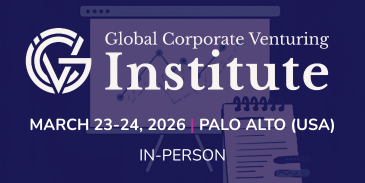Keynote speech at the Fifth University-Business Forum by Christian Reinaudo (pictured), chief executive (CEO) and president of Agfa Gevaert, sees Europe needing to improve university and business cooperation.
It is my pleasure and honor to address this audience this morning. Not only it is important to improve university and business cooperation but it is vital for the development of Europe.
Other large countries like the US already for a long time and more recently China are reinforcing the links between their academic and enterprise worlds.
Innovation, entrepreneurship, partnership are key elements to bring Europe to the next level in terms of creation of new ideas, to accelerate changes and deliver impact and results. Every day new inventions are born leading to the need of new individual profiles for our students, researchers and engineers.
As CEO of a large Europe-headquartered company, Agfa-Gevaert, I would like to testify from my own experience and deliver my own contribution to the next 2 days discussion.
Our economic welfare and our ability to grow are largely determined by our ability to innovate and compete with other regions. To this aim, the different actors in the economic process spend huge amounts of money and time in research and development, education, legislation, organization,…
The industry’s role in the innovation process is crucial. As enterprises are mainly focused on economic performance, they need innovation to remain competitive in the markets they are active in or to become successful in the markets they want to enter. For this, they must have qualitative research as well as high level R&D staff at their disposal.
Universities have an equally important role to fulfill in the process. First of all, by investing – usually funded with public money – in fundamental research of which the results become available through publication. Secondly, by guaranteeing a constant flow of highly qualified engineers and scientists.
The last, but not the least, actor in the innovation process is the government. I should speak about several actors as there are so many different initiatives and sensitivities in this domain! It is their role to create a positive climate for innovative entrepreneurship as well as the organization of the education infrastructure at all levels. It is clear that in today’s world this role is not reserved exclusively for the national or local governments. The European Union is probably the best example on which level a lot of the decision making is being done nowadays. Finally, let us also not forget the role of the government when it comes to legislative initiatives in the field of e.g. competition or intellectual property protection and I see in this domain encouragement is the very recent evolution to better protect European companies against unfair practices of some foreign countries.
Allow me to elaborate my point of view on the cooperation between the different actors and I will use the Agfa situation to illustrate my ideas.
Universities are almost by definition focusing on long term fundamental research. Projects run over several years and therefore the need of universities for the renewal of talents is somewhat limited. The human urge for discovery and the related prestige are important drive engines of their R&D activities.
The industry, on the other hand, is driven by the survival instinct of the fittest. Companies are more profitability oriented and are working with stricter and shorter deadlines in their research activities. Time-to-market is of the greatest importance in the me-first race with the competition.
Although these modus operandi are at a first glance each others opposite, they do not need to be contra productive. On the contrary, I believe the interaction between university and industry, based on two entirely different ways of working, can be very successful as they are so complementary.
A few examples of government – university – Agfa cooperation:
As a world player in the graphic and medical imaging industry for more than 100 years, Agfa has to cope with the drastic changes this industry is experiencing since the beginning of this century. (Actually, we made our first acquisitions in the digital healthcare and graphics world in the eighties of the previous century). The analog, film based core technology has almost completely been digitized in the past ten years. This radical, but inevitable transformation process has had a lot of implications for companies worldwide, not just for Agfa. New markets with their own singularities, new products, new technologies, new business models and new innovation policies. The challenges we had to cope with were immense, and we were definitely not helped by a thriving world economy in the past ten to twenty years.
So we needed to adapt to the new situation, and we needed to adapt fast.
As we were moving into new domains, we needed to ingest new talents and new skills. Specifically in our case: IT talents for Healthcare IT or inkjet technology specialists for our Graphics activities.
It is no coincidence that a lot of our R&D centers for our healthcare or graphic activities are close to prestigious universities or institutes: Waterloo in Canada, Ghent, Bordeaux and Paris, Munich, Vienna, Shanghai,… Thanks to an ongoing and intense cooperation with the local top universities, colleges and institutes, we were able to set up successful R&D programs.
In the period 2002-2007 we run 3 major projects with the Belgian agency for Innovation through Science and Technology (IWT), each in collaboration with about 5 university partners. These 3 projects were valorised in our Graphics business group. They are fine examples of a focused bundling of knowledge that enabled us to speed up the creation of technology platforms that were to a large extent completely new to us. These projects were the foundation of our actual high throughput ultraviolet inkjet technology which we consider to be one of the growth engines of our company. Our graphic R&D by the way is mostly a European matter.
Our HealthCare activities, on the contrary, are more scattered over the world. Especially the healthcare IT research for software for the management of entire hospitals and hospital groups, as well as for the comprehensive electronic patient record, is a matter that is to a large extent defined by local specific legislation, healthcare practices. For that reason we have opted for a systematic approach of developing our solutions country by country. Our R&D centers in Belgium, Germany, France, Canada, USA, China,…, which we very often acquired to targeted local acquisitions, are also very closely linked to the local top universities.
Here too, we see that the government can play an important role in facilitating R&D investment and cooperation, but it is in Canada that we found most of our support in this domain, not in Europe. The Canadian government recognizes the need to invest in R&D as a necessary lever to create new jobs. Four years ago, we signed an agreement with the Government of Ontario for a grant that supports the growth of our company’s Research, Development and Regional operation centers in Toronto and Waterloo (Canada). The grant supported a total of nearly $200 million investment by Agfa HealthCare in its Ontario operations, which helped creating 100 new positions and re-investing in 276 existing jobs. The total investment was designed to centralize and streamline the company’s research, development and regional operations, which will serve both the North American as well as global requirements for the company.
In France, we have a strong active presence in the R&D funding organization of the Aquitaine region, a region of more than 3 million people. In this, the University and the University hospital of Bordeaux, the local cancer center and of course the industry. The program aims to build and maintain a strong leadership of the Aquitaine region in France, sp
ecifically in the domain of information and communication technology for the healthcare sector. At the moment, Agfa is involved in three innovation projects of the program, related to amongst others the development of the Electronic Patient Record in this France region.
I could also mention the Debug IT program coordinated at the EU-level which allows understanding better the origin of nosocomial diseases in hospitals.
All this to show that there is a lot of successful cooperation between universities, government and industry. However, I’m convinced that there is still room and also a need for improvement.
A potential conflict of interest: short term versus long term:
Speaking from the company point of view, I believe we have a very important role in mentoring the universities, the professors and students so that they understand the needs of the industry better. Many still have an image of the industry being focused on the short term. This is only partially true. Of course we need to deliver short time rentability and profitability, certainly when you are a stock exchange listed company.
But a good entrepreneur also works on the long term. We at Agfa are a good example. Had we stuck to the short term objectives, we probably would have missed the digital revolution in our industries as some of our competitors did. The digitization of the healthcare sector and graphic industry did not start 10 years ago as so many think. It started somewhere in the nineteen eighties. If at that time we didn’t decide to cooperate or to invest in companies like Mitra or Compugraphic there would not have been an Agfa today.
Knowing what the focus points or the key elements of each others activities are, is vital for a successful cooperation. Being located close to one another, having the local contacts or being represented in each others organizational structure are ways to improve the communication, and by consequence the awareness and the cooperation.
As said before, the government has an important role as a facilitator in the university – industry cooperation. They could help by co-funding the programs that link the long term research programs of the universities to the possibility of future application in the industry. It is necessary that forces are bundled in consultation.
Spin-offs: New competitors or new partners for established enterprises:
Too often, we hear of interesting spin offs that emerged from research project and that were buried without the expected result, because the link with the industrial world was missing. The industry didn’t know it was there. Creating a spin off may be a good idea, but it needs visibility and a mentor in the industry that will help it to develop further its business. Very often they don’t have the necessary industrial manufacturing facilities at their disposal, neither do they have access to the large sales and distribution networks that companies like Agfa can offer.
Furthermore, without cooperation between industry and universities, these spin offs can turn out to be a sort of unfair competitor to the own local industry, as they receive a lot of funding which is in fact realized with local tax money. I’m convinced it’s a better use of both the private money of the industry and the public money of the universities if we can avoid an overlap in the spending as is often the case.
It so happens that our company now has to compete with small spin off competitors in Belgium and in France in the field of the Electronic Health Record Development, funded with the public money and obliging our French and Belgian software R&D centers to invest in similar solutions. A co-operation from the start and an efficient approach of our combined R&D efforts would have made more sense. It would strengthen both the position of the University’s R&D department as well as our company’s market position. I think we should avoid such situations where governments invest in university research that competes with its own industry.
Agfa may very well be in need of some advanced applications or technology that these university spin offs can develop. In a close co-operation from the initial first steps of such projects, this can be very positive for the university spin offs, because they get the opportunity to operate in a domain that is not yet overpopulated by competitors. For Agfa there is also a plus, because in stead of having an extra competitor to deal with – even if they may yet not be successful –, the industry has a partner that is for instance working with our healthcare IT solutions for which it can develop specific applications that we need – and with us the other Agfa’s of the world.
We at Agfa, as many companies remain committed to our mission: to be the partner of choice in all the markets in which we operates. We do this by offering leading edge technologies, innovative ways of working and an in-depth understanding of the businesses and individual needs of our customers. Investing in innovation and delivering top quality solutions are key in this. We are convinced that this is the right approach for the long-term success of our company, we also know that we can only realize this through a close partnership with our customers and our suppliers but also my leveraging the cooperation with universities located in the countries where we develop our technologies and products for the future. I think all parties in the industry-university-government triangle can benefit from working in this philosophy.
Closing the gap
In 2001, Agfa started its Discovery program which originally was designed in support of our R&D talent recruitment needs. At first, very much material and chemistry oriented, the program very soon opened to all Agfa R&D activities, including application and business research, manufacturing and product design, process engineering (soft- and hardware) and even marketing.
The same evolution is to be noted when it comes to the regional scope of the Discovery project. At first, limited to the European territory it soon became a worldwide program. In 2010, we organized a first intern recruitment event for Chinese students. In 2011, we had 45 interns coming from 12 different countries worldwide.
The Agfa Discovery program offers them an R&D learning path. That path includes all stages of the R&D project management as a part of the industrial way of working: writing a project proposal, managing the project in terms of research, technology and logistics, making an R&D presentation, writing reports,… Great attention is given to ‘best lab practises’ in terms of safety, health and ecology, as well as to ‘the development of the soft skills they need in the industry’: reporting, presenting, teaming up, to name some.
Today, our society is still confronted with a huge gap between the academic world and the industry. When students, regardless of the level of graduation, leave their academic surroundings, they are not ready for the jobs they will take up in the industry. I, and I think I may speak for the entire industry, plead for the integration of industrial experience periods in the students final study year(s). From our Agfa Discovery program experience, I recommend a strong project based approach for these experience periods with a strong focus on job-related soft skills next to the more scientific work. The private sector is willing and engaging itself in developing curricula and providing work experience to the students before they make their exit from the university. To be able to recruit new people that are almost immediately employable is the dream of all employers. But it is also of great importance to the students as they will significantly increase their employment chan
ces. And this is an aspect, I think, that is not getting enough consideration from the university world.
In this respect I would like to quote Mona Mourshed, partner and director of education at McKinsey and Company. “Imagine a world where education institutions had to look at job placement rates and had to look at how graduates were doing three or five years after graduation, to see what actually happened to their career trajectory and wages.” Ladies and gentlemen, I believe if this was to be a KPI for our education institutes, our education system would be very different from our current systems.







